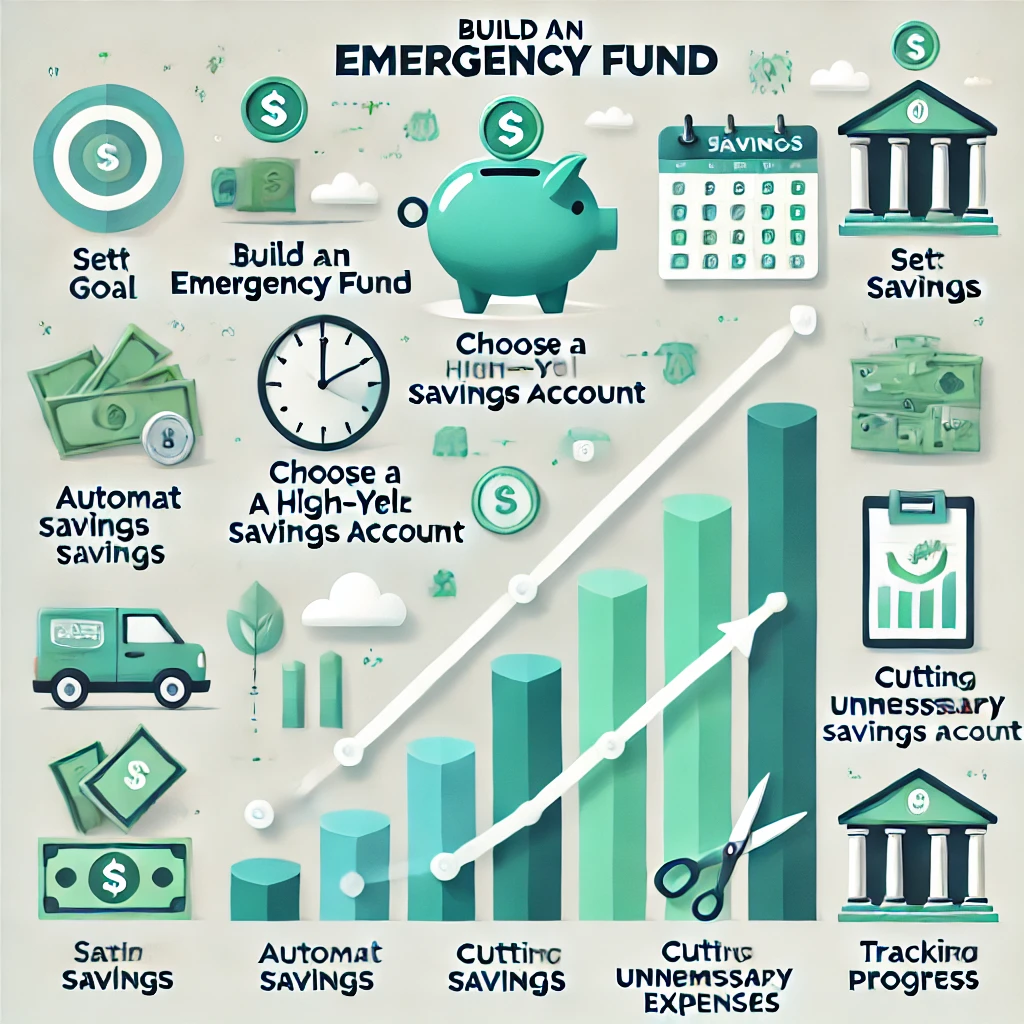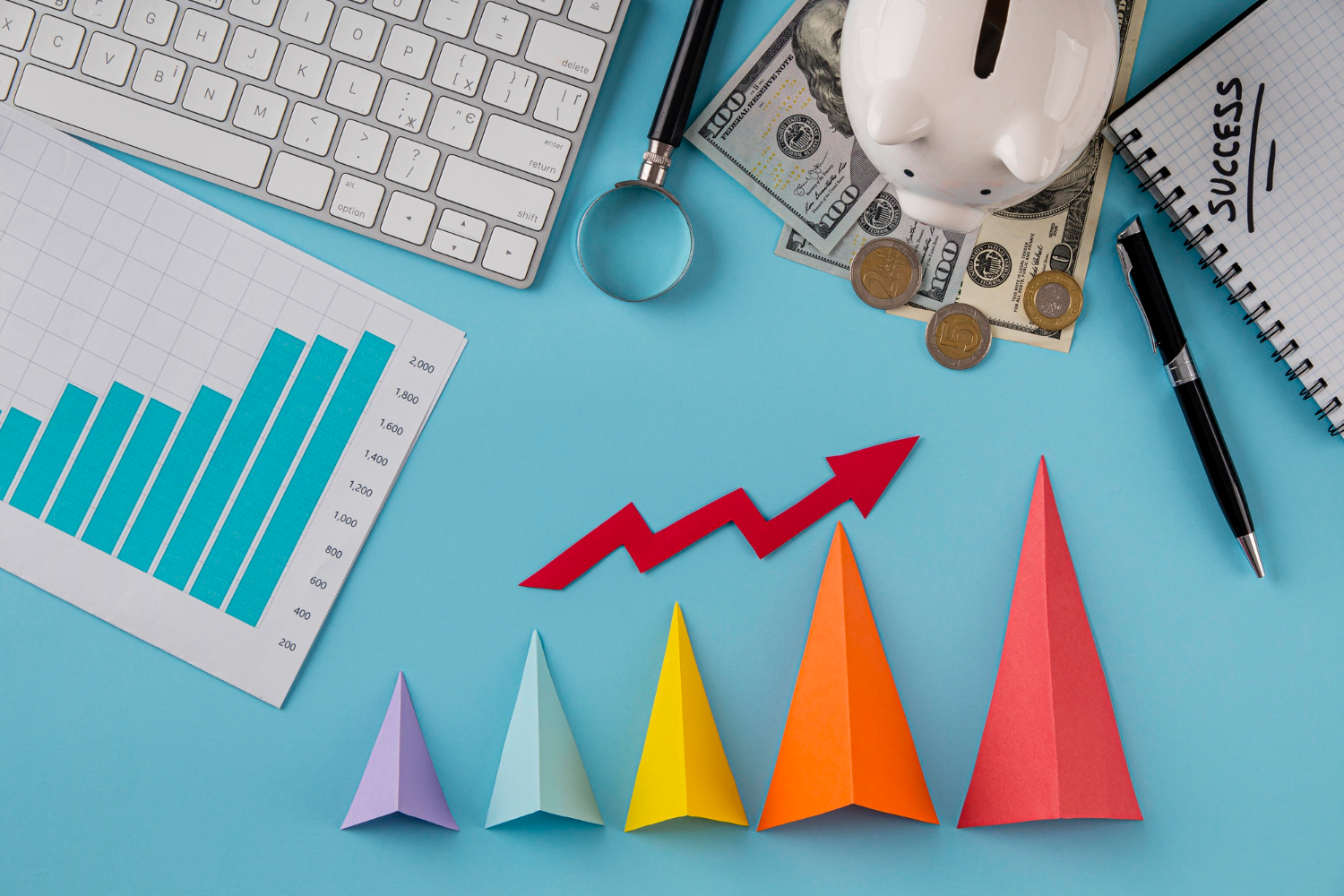Building an emergency fund is a crucial step in securing your financial well-being. Life is full of uncertainties, and having a financial cushion helps you navigate unexpected expenses with peace of mind. Whether it’s an unplanned medical bill, a car repair, or a job loss, an emergency fund prevents you from dipping into debt or disrupting your financial goals. In this guide, we will walk you through practical and effective strategies to create and grow your emergency fund for long-term financial stability.
What is an Emergency Fund?
An emergency fund is a pool of money set aside specifically for unexpected expenses or financial emergencies. Unlike a vacation savings or a retirement account, this fund is your financial safety net, ensuring that you can cover sudden costs without going into debt or sacrificing other financial priorities. Financial experts often recommend saving at least three to six months’ worth of living expenses, although the exact amount can vary depending on your personal circumstances.
Why an Emergency Fund is Essential
Without an emergency fund, you might find yourself reaching for credit cards or loans during a financial crisis. Relying on debt increases stress and compounds the problem by adding interest and repayment costs. By having a dedicated savings cushion, you can avoid this cycle and protect your financial health. Moreover, it offers peace of mind, knowing that you’re prepared for life’s uncertainties.
Setting Your Emergency Fund Goal
Before you start saving, it’s important to define how much you want to save in your emergency fund. The goal should cover essential expenses such as rent or mortgage, utilities, groceries, and insurance for at least three to six months.
Factors to Consider When Setting a Goal
- Monthly Expenses: Start by calculating your average monthly costs. Include rent, groceries, utilities, insurance, and transportation. Focus on needs, not wants.
- Employment Stability: If your job is stable, three months’ worth of expenses might suffice. For freelancers or those with unpredictable income, aim for six months or more.
- Lifestyle and Dependents: If you have dependents, your savings target will need to cover their basic needs too.
By setting a clear goal, you can track your progress and stay motivated as you build your fund.
Automating Your Savings
One of the most effective ways to build an emergency fund is to automate the savings process. Automating ensures that you regularly contribute to your fund without having to think about it.
How to Automate Your Savings
- Set Up a Direct Deposit: If your employer offers direct deposit, designate a portion of your paycheck to go directly into your emergency fund. This way, the money is saved before you have a chance to spend it.
- Automatic Transfers: Most banks allow you to set up recurring transfers from your checking account to your savings account. Schedule these transfers on payday to ensure consistency.
Automation removes the temptation to spend the money elsewhere, helping you steadily build your emergency savings without even noticing it.
Choosing the Right Savings Account
Not all savings accounts are created equal. When selecting where to park your emergency fund, look for an account that offers easy access to your money while still providing some growth through interest.
Types of Accounts to Consider
- High-Yield Savings Account: These accounts offer a higher interest rate than traditional savings accounts, allowing your emergency fund to grow faster. Many online banks provide competitive rates with no monthly fees.
- Money Market Account: Similar to a savings account but often with higher interest rates and more access to your funds through checks or debit cards.
- Certificates of Deposit (CDs): A CD locks your money for a set period, offering higher interest. However, it’s not the best choice for an emergency fund, as accessing the money before maturity can incur penalties.
Starting Small and Building Gradually
Many people delay building an emergency fund because they feel overwhelmed by the final goal. However, you don’t need to save a large amount right away. The key is to start small and build momentum.
Practical Steps for Saving
- Start with a Mini-Emergency Fund: Aim to save $500 to $1,000 initially. This amount is often enough to cover small, unexpected expenses like car repairs or medical bills.
- Increase Contributions Over Time: As you get more comfortable, increase your contributions. Funnel any windfalls like tax refunds, bonuses, or cash gifts into your emergency fund.
- Make it a Habit: Commit to putting a set percentage of your income into your emergency fund each month. Even 1% or 2% of your income can add up over time.
Starting small ensures that you can manage the process without feeling discouraged.
Cutting Expenses to Boost Your Fund
Finding extra cash to save can be challenging, especially if your budget is tight. But by cutting unnecessary expenses, you can free up money to contribute to your emergency fund.
Ways to Cut Expenses
- Evaluate Your Subscriptions: Cancel any subscriptions you no longer use or downgrade to a cheaper plan.
- Meal Planning: Reduce dining out and plan your meals for the week. Cooking at home is often more cost-effective.
- Avoid Impulse Purchases: Create a 24-hour rule for unplanned purchases. If you still want the item after 24 hours, it may be worth buying.
- Use Coupons and Cashback Apps: Take advantage of digital tools that help you save on groceries and essentials.
Even small adjustments to your spending can make a significant impact on your savings.
Avoiding Common Pitfalls
While building an emergency fund, it’s easy to make mistakes that can derail your progress. Understanding these pitfalls ahead of time can help you avoid them.
Mistakes to Avoid
- Using Your Emergency Fund for Non-Emergencies: It’s tempting to dip into your emergency fund for things that aren’t true emergencies, like vacations or shopping sprees. Resist the urge and only use the fund for genuine financial emergencies.
- Not Replenishing the Fund: Once you use money from your emergency fund, make it a priority to replenish it as soon as possible.
- Procrastinating: Delaying the start of your emergency fund can leave you unprepared when a real financial emergency occurs.
By avoiding these common pitfalls, you can maintain a robust emergency fund that will truly serve its purpose.
Tracking Your Progress
Building an emergency fund can take time, but tracking your progress keeps you motivated and ensures you stay on track.
Ways to Track Your Savings
- Use a Savings App: Apps like Mint or YNAB help you monitor your savings and spending habits.
- Set Milestones: Break your larger goal into smaller milestones and celebrate each achievement.
- Check Your Savings Rate: Aim to increase the percentage of your income going into savings over time.
Staying engaged with your progress helps you build a healthy relationship with saving.
Revisiting Your Emergency Fund Regularly
As your financial situation changes, so too should your emergency fund. Whether you experience a change in income, new expenses, or a lifestyle shift, it’s important to revisit your emergency fund goals periodically.
When to Adjust Your Fund
- After a Major Life Change: A new job, moving to a new city, or starting a family may require adjusting your savings target.
- Increase in Income: If you receive a significant salary increase, consider boosting your emergency fund contributions.
- Change in Living Costs: Rising rent or utility bills may require more in your emergency fund to cover essential expenses.
By regularly reviewing and adjusting your fund, you can ensure that it remains sufficient for your needs.
You can also read;How to Inspect a Car Before Buying it Used
Emergency Fund and Financial Security
An emergency fund is not just about being prepared for the worst; it’s about achieving peace of mind and long-term financial security. When you have an adequate fund in place, you reduce financial stress and gain the freedom to focus on other financial goals such as investing, homeownership, or starting a business. This level of security enhances your quality of life and provides a buffer against life’s inevitable surprises.




